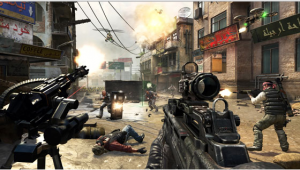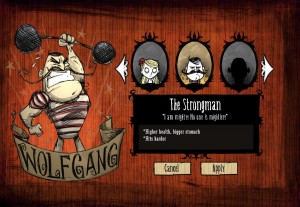Branding is a major part of marketing in any industry, and the game industry is no exception. For today’s post, I want to talk about how there are three kinds of video game branding, and what they mean for your studio.
1: Mascot-Driven
The earliest and easily most recognizable form of branding is mascots. From the days of Mickey Mouse to the Minions, character/mascots are an easy way to see the power of branding. Having a face/character to associate to a brand provides something instantly recognizable.
During the ’80s into the early ’00s, the game industry was focused on mascots; especially with platformers. Everyone wanted the next big mascot-driven game and to knock Mario and Sonic off of their perches. If you can get a character that becomes popular, you can easily license it to all manner of products.
Mascot characters are the most adaptable of brands when it comes to different games. The character in question will dictate what games they’ll fit best into. Putting Mario in the Olympic Games is one thing; putting Master Chief into an E-rated platformer is another. The key problem with mascot brands is that their following is limited based on the people who like the mascot; with the game being secondary.
For a far more lucrative option, we turn to franchise branding.
2: Franchises
Franchise branding is when the series itself becomes a brand. Mega franchises like Call of Duty, Battlefield and Grand Theft Auto have left big impacts on pop culture and the audience. People know when they see a game from any of these franchises what to expect, and they are more than happy to put out the money for their favorite series.
Publishers love franchise branding, as it presents a known in the game market. If the first game in a series sold X, then subsequent games should sell around that amount or more. Sequels are also easier to design in the sense that the foundation is already done; now the designer has to iterate instead of start from scratch.
The problems with franchise branding is that it becomes harder and harder to keep things going. While the mascot brands have some impact on the design, the franchise has complete control. Once you have established the design, then that’s what you’re going to be doing from that point on.
There is also the added pressure from the publisher to keep pushing the franchise up and up; even if it betrays the brand. Dead Space is the infamous example of this, as EA was expecting way too much from the horror design.
The line between growing the brand and going too far away can be thin for some designs. For our last point, I want to talk about what we’re seeing out of the Indie space and the top AAA studios.
3: Studio
Studio branding is when the game company itself becomes a brand. In this case the consumer is interested in the work from the studio more than just the game itself. Companies like Valve, Blizzard and Nintendo have each made a name for themselves. You know when a studio has reached this level when any announcement from them is met with instant coverage.
Many indie companies have become brands onto themselves, thanks to releasing consistently good games. Klei Entertainment has made multiple games of different genres, but each one carries the studio’s distinct charm and branding.
Getting to the point where your studio itself becomes a brand depends on a combination of factors: How good are the games being put out? Are there any people in your studio that have become recognizable to gamers? Are your games visually or design-wise unique enough to stand out from everyone else?
Studio branding is the hardest of the three to achieve, but easily the most rewarding. Building a fan base that is not just interested in one game, but anything you put out is amazing. Not only that, but it creates a consumer group that is actively interested in seeing you succeed, and will help get the word out about your game.
The downside should be obvious: If you betray your own studio branding and your consumers turn on you, then you might as well just close your studio. Fans can be your best cheerleaders or your worst enemies if you give them a reason. Destroying your studio branding is career suicide, and unrecoverable.
The Power of Branding:
Regardless of what kind of branding you’re aiming for with your studio, the advantages are too big to ignore. Any kind of recognition is huge for discoverability and will make it easier to sell subsequent games.
Building a brand takes time and effort to do, but it is an excellent goal to shoot for no matter who you are in the Game Industry.




